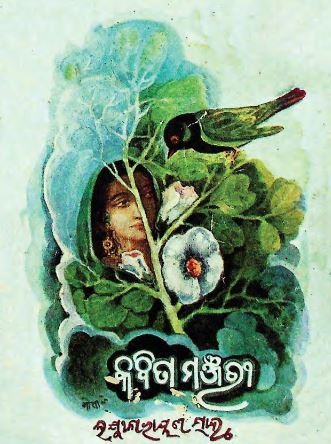In the rich tapestry of Odia literature, few works resonate as profoundly as Lakshinarayan Sahu’s “Kabita Manjari.” Published in 1953, this remarkable compilation of poetry captures the essence of Odishan culture, tradition, and the contemplative mind of its author. As we delve into “Kabita Manjari,” we uncover the brilliance of Sahu’s literary craftsmanship and the timeless beauty found within his verses.
Lakshinarayan Sahu, a renowned poet, and literary figure in Odisha, has with ‘Kabita Manjari’ left a deeply impactful legacy. His mastery over words and profound insights into human emotions are prominently displayed in this collection. The year 1953 marked an important milestone with the publication of this anthology, firmly rooting Sahu’s work in the annals of Odia literature.
One of the most striking features of “Kabita Manjari” is its ability to evoke a sense of simplicity while simultaneously exploring complex themes. Sahu’s poems transport the reader into the heart of Odisha, bringing alive its vibrant festivals, picturesque landscapes, and the daily lives of its people. Each poem is a journey into the cultural ethos of Odisha, often drawing from its rich traditions and indigenous practices.
Equally compelling is the lyrical quality of Sahu’s poetry. His language is both sensuous and evocative, flowing seamlessly to create vivid imagery. The poet’s ability to intertwine classical Odia poetic forms with modern sensibilities is a testament to his versatility and deep understanding of the literary art. His poems range from the deeply philosophical to the delightfully mundane, always with a rhythm that is compelling and a narrative that is captivating.
Sahu’s exploration of human emotions is another noteworthy aspect of “Kabita Manjari.” He deftly captures the nuances of love, longing, sorrow, and joy. Each piece is a window into the human soul, portraying the gamut of emotions with an authenticity that is both touching and thought-provoking. His depiction of the delicate balance between human experiences and nature is particularly striking, resonating with readers across generations.
The publication of “Kabita Manjari” in 1953 also holds historical significance in the context of Odia literature. The period marked a time of significant literary activity in Odisha, with poets and writers striving to establish a distinct Odia literary identity. Sahu’s work played an instrumental role in this cultural renaissance, inspiring future generations of poets and authors. His efforts in preserving and celebrating the Odia language and literature ensure that “Kabita Manjari” remains a cherished piece of Odia literary heritage.
Lakshinarayan Sahu’s poems touch not only the hearts of Odisha’s people but also reach out to a universal audience by addressing themes that are timeless and universal. Beyond its regional importance, “Kabita Manjari” exemplifies the power of poetry to transcend borders, making Sahu’s messages of love, nature, and human introspection accessible to a global readership.
In conclusion, “Kabita Manjari” is more than just a collection of poems; it is a celebration of Odishan culture, a reflection on the human condition, and a testimony to Lakshinarayan Sahu’s literary prowess. As we revisit this seminal work, published over seven decades ago, we are reminded of the enduring power of poetry and its ability to unite us across time and space. “Kabita Manjari” remains a milestone in Odia poetry, and Lakshinarayan Sahu’s legacy continues to inspire and resonate with poetry enthusiasts around the world.
Books Info
| Books name | Kabita Manjari |
| Author | Lakshinarayan Sahu |
| No Of pages | 47 |
| Publisher | Prabhata Prakashani |
| Publication | 1953 |
| Printed At | Kamala Kumari Press |
| Distributor | NA |

